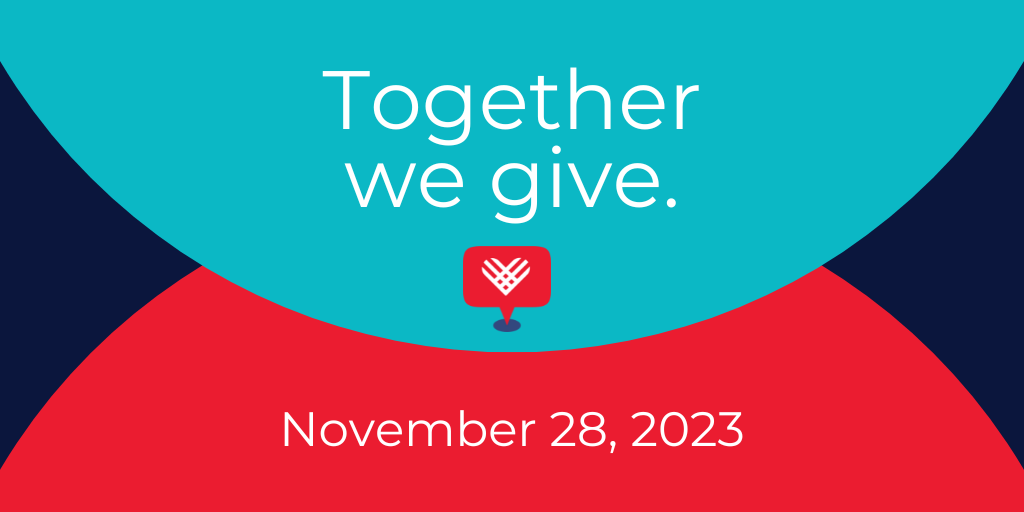What started in 2012 as a way to give back during the holiday season has extended into a global campaign to support nonprofits through Giving Tuesday.
Your nonprofit should participate because it allows you to attract new donors and raise more money. People come together to make an impact in their communities during a unified day of giving.
Circle the date on your calendar and start planning now: Giving Tuesday 2023 is on Nov. 28. As #GivingTuesday continues to grow, it’s more important than ever to take part and create a powerful fundraising campaign.
Is #GivingTuesday for you? Consider these key facts from Giving Tuesday Data Commons, which works across various sectors to understand drivers of generosity better:
- $3.1 billion was donated in the U.S. on #GivingTuesday 2022, up 15% from 2021
- Online donations exceeded $1 billion for the first time on Giving Tuesday
- 35 million U.S. adults participated in 2022
- Giving to non-registered entities was two times more common than giving to registered entities in the U.S.
If your nonprofit organization isn’t participating in #GivingTuesday, 2023 might be the year to get started. Here are five reasons why.
1. #GivingTuesday is Community-Driven with Recognizable Branding
By now, most people probably recognize the heart logo that’s part of the Giving Tuesday brand. Participation puts your nonprofit in a class of others that are celebrating the community of philanthropy together.
The original #GivingTuesday logo started many other country-specific logos with varying heart designs.

What’s great for you is that the organizers of GivingTuesday don’t place many restrictions on logo or branding usage. The only rules are generally that you do not modify, reproduce, or create your own derivative of their logo. Their terms of use page has more information. The varying logos from each country are official logo variations that have been approved by the organization.
Use the GivingTuesday logo in your campaign materials alongside your organization’s logo. Or create your own Giving Tuesday design, but make sure it isn’t the same as the organization’s and uses none of their trademarks. Calling attention to your GivingTuesday campaign with the logo makes you more likely to get the attention of different kinds of donors.
2. Giving Changes Year-to-Year
According to Giving Tuesday’s latest report, From Scarcity to Abundance: Mapping the Giving Ecosystem, there’s been a shift in the way people think about supporting other organizations. While overall monetary giving increased by 2.7% in 2021, it is important that organizations don’t overlook the opportunity to invite supporters to participate in your cause in a variety of ways.
Nonprofits must engage people across all types of giving and non-giving behavior. Globally, just 5% of people only gave money.
Donations broke down like this in 2021:
- 67% of Americans donated items
- 59% of Americans donated money
- 36% of Americans donated time
- 80% of Americans engaged in two of the activities above
Here’s the most important takeaway:
People are most likely to give to a cause they believe in. It matters more than an organization being registered as a nonprofit or where they have donated in the past.
What this means for your nonprofit is that your story is more important than ever, on #GivingTuesday and every day.
3. Expected Trends for Giving Tuesday 2023
Increased donations are expected again in 2023 as Giving Tuesday continues to gain worldwide momentum. Additionally, donors are starting to think about the event, now in its 11th year.
For nonprofits already creating a solid donor path for Giving Tuesday, the key factor is donor retention. Sustainable giving relies on engaging a wide and diverse set of donors. As it stands, new donor acquisition and engagement are being neglected in favor of major gifts as we saw a decrease in micro, small, and midsize donors.
Additionally, we saw a significant decline in the ability of organizations to recapture lapsed donors. At one point, these donors were inspired to give to your cause – look at what originally captured their attention, what problem they wanted to help solve, and the acquisition channel they came through.
If you can keep and continue to engage past donors, the likelihood of increasing dollars and donors is higher.
Other expected Giving Tuesday trends for 2023 include:
- 20 million people in the U.S. donated financially in 2022; expected that number to continue to rise
- 11 million people donated goods; up 8% from the previous year, with expected growth again in 2023
- 10 million people volunteered, up 3% and expected to remain flat
- 15 million people “gave voice” to a cause they support, an increase of 11% over 2021 and expected to continue, especially on online and social media
One of the best ways to ensure your nonprofit has fewer lapsed donors is to give your donors the ability to opt into a recurring donation. Recurring Donations empower your donors to support your cause regularly, creating a more loyal and engaged donor base.
There are many ways to encourage recurring donations, such as:
- Offer perks for recurring donors like access to private content on your website or a special gift.
- Create an exclusive community for repeat donors where they can engage with your organization more closely.
- Send monthly or quarterly donation reports to donors with specifics about how their gifts are being put to good use.
It isn’t enough to simply ask for donors to give on a regular basis. Following up with updates, news, and how your donor’s gifts have helped your organization accomplish its goals is paramount for maintaining loyalty.
Inspiring giving requires organizations to tell a story and to do so in a way where potential donors can see themselves in another’s pain or challenge.
4. Giving Tuesday Engages a Broad, Global Audience
80% of global donors say they give due to a personal or emotional connection with a cause. Giving Tuesday has theorized that the basis for the decline is fundraisers engaging donors on their relationship with the organization versus their relationship with the cause.
Nonprofit organizations must move away from transactional engagement and move towards cultivating relationships with their community of supporters.
But you need to start right now.
- Determine what story you plan to tell about your nonprofit.
- Decide how you will encourage supporters to give across a wide variety of participation options.
- Create a landing page and donation form to share stories that increase positive sentiment around your cause.
- Launch ahead of Giving Tuesday using hashtags and logos.
- Send #GivingTuesday emails – plan 3 to 5 emails – within 2 weeks of Giving Tuesday to highlight your efforts.
- Remember to thank all donors from your Giving Tuesday campaign and stay engaged with them throughout the year.
People have a natural desire to participate and give – tap into their generous spirits by approaching fundraising with an abundance mindset and creating multiple avenues for supporters to engage with your cause.
5. Kick Off End-of-Year Giving Season
Finally, #GivingTuesday is the start of the end-of-the-year giving season. Both businesses looking to make corporate donations and individuals who want one more tax break are considering donations in the final 4 to 6 weeks of the year. Giving Tuesday is the start of that end-of-the-year countdown.
As you think about fundraising campaigns and goals, integrate Giving Tuesday and end-of-the-year campaigns into a single fundraiser to finish the year strong.
Use Giving Tuesday as a way to kick off virtual giving campaigns and continue to create engagement for the coming year. (Need some ideas of how to do just that? You can find 6 ideas here.)
To maximize impact, use the same messaging, graphics, and images beginning with Giving Tuesday through the end of the year. The only change is removing the Giving Tuesday icon. This will help you create a sustainable end-of-year campaign without having to come up with two ideas to execute.
The best fundraisers are from the heart; keep that in mind as you share your nonprofit story heading into #GivingTuesday and the end-of-the-year donation season.
Use Our Giving Tuesday Workbook to Plan Your Full Campaign
The GiveWP Giving Tuesday workbook has a full 12-week guide on planning and executing a strong Giving Tuesday campaign. Download yours now for free.
Free
Giving Tuesday
Workbook
Get everything you need to launch your Giving Tuesday campaign for FREE.



